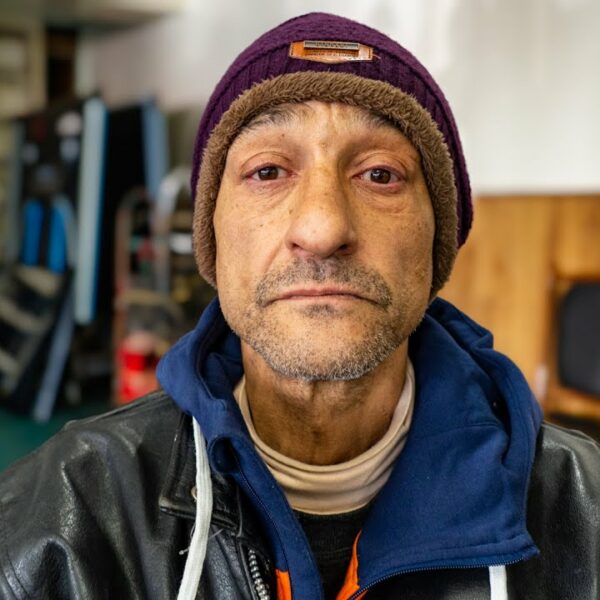Just over a year ago, New York City’s Metropolitan Transit Authority (MTA) shut down the city’s subway system for the first time in its history. MTA said they made the decision to help slow the spread of COVID-19, clean the subway, and help people experiencing homelessness enter the city’s shelter system.
When the subway resumed full services on May 17, MTA chairman Pat Foye said the moment is a “critical moment in New York City’s recovery, and at the MTA we have a singular focus right now, and that is bringing riders back to mass transit.” He added that the agency is focused on “providing a safe and secure environment where people feel comfortable to ride.”
Governor Andrew Cuomo has defended the decision on several occasions. During the announcement to reopen the subway, Cuomo said the “MTA subway trains have never been cleaner than they are now,” adding anecdotal evidence of fewer people experiencing homelessness riding the trains to back up his argument.
Critics of the decision to shut down the subway called it “unscientific”. A growing body of research has found COVID-19 does not easily pass on solid surfaces. Advocates for people experiencing homelessness in the city sued MTA in February. They argued the agency unfairly targeted homeless people in its decision.
For people experiencing homelessness in New York City, the subway shutdown had life-altering consequences. Many emerged from the subways to sleep rough on the streets. Others took refuge on busses meant for essential workers. These reactions beg the question:
Why do some people experiencing homelessness choose to avoid using the shelter system altogether?
Autonomy vs. Soft Incarceration
To some people experiencing homelessness, the choice is stark: autonomy or soft incarceration.
Living a life on the streets is tough work. However, it provides a person experiencing homelessness with autonomy. They can choose where to lay down (subject to local law enforcement, of course), sleep and eat. They are able to interact with the city they call home. Similarly, they are free to form communities and build resource networks as necessary.
Life in the shelter system provides a much different experience of homelessness. Some critics have labeled it as “soft incarceration” due to restrictions placed on shelter guests.
Guests are often subject to strict curfew requirements. If they violate them, they could lose their bed. There are also strict limitations on what possessions a person may store at shelters. Families and pets are often not welcomed in shelters either.
Furthermore, shelters can be just as dirty and violent as many jails and prisons. There have been several reports of Hepatitis breakouts at shelters across the country. Others have reported numerous accounts of theft, violence, and sexual assault as well.
Distrust of State Housing Solutions
Against this backdrop, it would seem reasonable for state lawmakers to prioritize new housing solutions. However, New York lawmakers expanded the state’s shelter system in an effort to provide services and stop the spread of COVID-19.
Steven Banks, the state commissioner of Social Services, said the city opened more than 1,300 specialized beds for people experiencing unsheltered homelessness. It also increased referrals for homeless services by 2,500 individuals.
Mayor Bill de Blasio also recently announced plans to train approximately 18,000 city workers to call 3-1-1 when they see a person experiencing homelessness to get them into shelters.
According to the National Coalition for the Homeless, the number of New Yorkers sleeping rough each night is up 39 percent from a decade ago. Similarly, over 120,000 New Yorkers contacted the municipal shelter system last year, even though there are just over 60,000 total beds available.
Not All Shelters Are the Same
All shelters are similar in that they provide people experiencing homelessness with a roof over their heads. But, not all shelters provide the necessary means of transitioning out of homelessness. Some people experiencing homelessness may avoid local shelters because it doesn’t provide the right services, according to a study by the Bowery Residents’ Committee (BRC), a housing advocacy nonprofit in New York.
For example, wet shelters—homeless shelters where alcohol is allowed—are needed to help people detox and recover from alcoholism. According to the American Addictions Center, wet shelters are “changing lives” because they provide people with physical substance addictions a safe place to get better.
Similarly, night shelters are most effective in areas with high concentrations of people experiencing homelessness who are employed. They are also effective for unaccompanied youth enrolled in school. Urban Peak in Denver and Colorado Springs is one such place homeless youths in Colorado can turn to for support.
For a shelter system to really serve people experiencing homelessness, BRC suggests tailoring shelter systems and outreach efforts to “meet the challenges” many people face out on the streets.
Ultimately, all people have a right to housing and a shelter should be a short-termed solution for homelessness. Contact your representatives and tell them you support affordable housing solutions.













